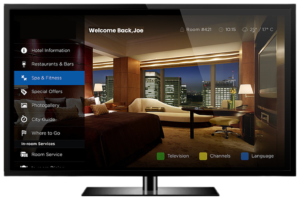Address
304 North Cardinal St.
Dorchester Center, MA 02124
Work Hours
Monday to Friday: 7AM - 7PM
Weekend: 10AM - 5PM

Did you know that 80% of people prefer watching a live broadcast over reading a blog post? Furthermore, the average viewer watches a live stream for at least twice as long as they do a normal video.
Streaming services are becoming more popular as live video content gets more popular. It’s interesting, original, unique, and simple to use.
There is a lot of technology that operates behind the scenes in live broadcasting. A streaming protocol is a technology that allows live video to be streamed.
Today, we’ll discuss six most popular live streaming protocols used by professional broadcasters today. Before we go into the various streaming protocols, let’s define what a video protocol is. We’ll also compare various relevant live streaming technologies, such as codecs and video streaming formats.
You will learn all there is to know about streaming protocols, including which one is appropriate for your individual application.
A streaming protocol, sometimes known as a broadcast protocol, is a defined technique of delivering various forms of information (often video or music) via the internet.
A video streaming protocol, in essence, transfers “chunks” of content from one device to another. On the other end, it describes the process for “reassembling” these fragments into playable material.
This highlights a crucial component of streaming protocols: in order for the protocol to operate, both the output device and the viewer must support it.
For example, if you send an MPEG-DASH stream but the video player on the device to which you are streaming does not support MPEG-DASH, your stream will break.
As a result, standardisation is critical. There are already a few primary media streaming protocols in general usage, which we will discuss in more depth shortly. Six common protocols are as follows:
Before we go into the exact protocols, let’s clear up some common misconceptions about live streaming protocols and codecs.
“Codec” is a term that appears frequently in the realm of live streaming, and its description appears to be similar to that of a video protocol at first look. A live streaming protocol, on the other hand, is not the same as a video codec.
Codec is an abbreviation for “coder/decoder.” It is a programme for compressing video files. RAW video files are made up of many still pictures that are played in rapid succession (typically at 30 frames per second). Consider thirty photographs, each with a resolution of two megapixels. That is a lot of storage. This is where a codec comes in.
Compression, which utilises mathematical techniques to remove unimportant material, is a solution for conserving space. For example, if a corner of the video goes dark and stays black for a few seconds, you can discard the individual pixel data and merely add a reference instead.
When the file arrives at its destination, it is decompressed so that the video may play normally. When it comes to live streaming, this procedure occurs in real-time. This is what occurs when a video codec is utilised. A video codec is simply a streaming technique tool.
Another potential source of misunderstanding is the video streaming format. This refers to the “container” or “packaging” used for video transmission. A container format often includes compressed video, compressed audio, and metadata such as subtitles and time information.
This information is delivered via a streaming protocol. The transport format specifies how material is stored within individual data chunks as they are broadcast. MP4 (fragments) and MPEG-TS are two common transport formats or containers for streaming video.
Different video streaming protocols are used for various applications. Certain streaming protocols are more suited for certain streaming configurations than others. The ideal protocol for live streaming is determined by the circumstances.
Professional broadcasters should be familiar with six common streaming protocols: HLS, RTMP, SRT, MSS, MPEG-DASH, and WebRTC. Let’s look at some of the history and technical requirements for the most used protocols.

Apple created an alternative standard called HLS streaming. HLS is an abbreviation for HTTP Live Streaming, and it is the most extensively used streaming protocol on the internet today. This was not always the case, because when Flash was still in use, the most popular streaming protocol was RTMP.
HLS is an adjustable bitrate protocol that employs HTTP servers as well. This protocol is a living specification, since Apple is constantly adding features and improving HLS.
Here are two recent instances of how Apple has enhanced HLS:
Despite improving on previous problems, Apple has failed to resolve the latency issue related with HLS. In comparison to RTMP, the HLS protocol has a comparatively significant latency. However, as previously said, Apple is always working on HLS and has already released Low-Latency HLS.
Low-latency HLS is an HLS protocol enhancement that allows for latency of 2 seconds or less. This latency is a significant improvement over the 15-30 second delay typically associated with HLS live streaming.
Unfortunately for Apple, this protocol hasn’t gained popularity as quickly as the company would want, so they’ve attempted a few different approaches to increase usage. Nonetheless, vendor support is missing throughout the video distribution ecosystem.
HLS is one of the protocols used by Dacast. Dacast has also implemented HLS ingest support, which is currently in its early stages. Keep in mind that just a few streaming services currently allow HLS ingest.
HLS streaming is one of the greatest live streaming protocols for connecting with people that use Apple devices.
The Real-Time Messaging Protocol (RTMP) was originally used to send movies to the Adobe Flash player. Macromedia created RTMP with the primary goal of interacting with Adobe Flash player, however as you may know, Flash player is no longer available.
To appreciate the prominence of RTMP as a delivery mechanism, remember that at one point, Adobe Flash Player was installed on about 99% of Western desktop computers. For long years, RTMP was widely utilised.
Because RTMP and Flash collaborated so closely, many people today consider the two names to be interchangeable, yet they are not. In other words, Flash is no longer supported, although RTMP is. Instead, it has a new use-case now that HTML5 has supplanted Flash.
RTMP has limited playback support nowadays. Instead, RTMP is now used for ingestion from the encoder to the online video platform.
RTMP ingest allows users to tap into the support of low-cost RTMP encoders. Much of the online video streaming industry, including leading streaming software and OVPs, is still compatible with RTMP ingest.
When paired with HLS delivery, RTMP ingest produces a low-latency stream. RTMP is still powerful because it’s capable of supporting low latency, which is a top reason RTMP ingest has remained popular. Another top reason RTMP ingest is currently the most popular protocol for ingesting has to do with compatibility. HLS ingest, for example, is still not widely supported by streaming services.
The transport/package format for RTMP is unavailable.
If you require a low-latency stream with little data processing time, RTMP ingest is one of the finest video streaming protocols to adopt.
Before we get into Microsoft Smooth Streaming (MSS), you should be aware that it is no longer in use as of 2022. However, we feel it is still important to discuss it in order to demonstrate that no protocol is unassailable simply because a huge brand like Microsoft is behind it.
MSS is a streaming protocol created by Microsoft in 2008 to fulfil the early demands for variable bitrate streaming. This video streaming protocol was noted for its low cost, little buffering, and optimal performance.
Microsoft Smooth Streaming is the technology that used to allow you to stream entertainment on an XBox 360, Silverlight, Windows Phone 7, and a few other linked TV devices. It was also utilised as the streaming protocol to NBC’s web platform during the 2008 Summer Olympics.
Smooth Streaming deployment formerly required Silverlight, Microsoft’s proprietary developer plugin framework. Microsoft Silverlight, on the other hand, was phased out in late 2021. Smooth Streaming’s compatibility for PlayReady DRM to prevent piracy was one of its strengths.
Despite MSS’s failure, Microsoft remains behind a few alternative protocols, such as MPEG DASH. Although MSS was promising in its early days, tech aficionados could tell that Silverlight wouldn’t live long, and as a result, MSS went down with it.
If you are looking for the best streaming protocol for Windows devices, be sure to consider MSS.
MPEG-DASH is the final protocol in our review. This is one of the newest streaming protocols, and it is gaining traction.
Standard HTTP web servers are used by Dynamic Adaptive Streaming over HTTP (DASH), also known as MPEG-DASH. When compared to traditional streaming systems such as RTP, this minimises the cost and technical difficulties of deployment.
MPEG-DASH is an adjustable bitrate (ABR) standard as well. This implies that it will detect changes in the viewer’s internet connection speed and deliver the greatest possible quality video at any given time. ABR streaming minimises buffering and improves the viewing experience.
It’s also worth noting that MPEG-DASH is an open standard that isn’t owned by any single firm. It was created as a collaborative effort by over 50 firms, including household names like Apple and Microsoft.
Although most web browsers support MPEG DASH, a significant disadvantage to be aware of when learning about the protocol is that iOS and Safari do not yet support it and may never do so. Given the popularity of Apple products, this has far-reaching repercussions.
Because not all viewers have the same internet connection, you must stream your video at multiple resolutions when trying to connect with a big audience, which is achievable using the adaptive bitrate protocol, which MPEG-DASH allows. MPEG-DASH is the greatest streaming protocol for presenting your audience with relevant video content.
Web Real-Time Communication (WebRTC) is a relatively new protocol compared to the others on our list, and while it is not strictly a streaming protocol, it is frequently discussed as one. It is mostly responsible for your ability to join live video conferences right in your browser.
WebRTC grew in popularity during the epidemic because it was designed to allow online conferencing and VoIP. Microsoft Teams, which became quite popular during the epidemic, makes advantage of WebRTC for both voice and video conversations.
WebRTC, like HLS and MPEG-DASH, offers adjustable bitrate streaming. WebRTC, like HLS, uses real-time transcoding to provide several bitrate versions so that consumers with low and strong connections may enjoy the stream. WebRTC has a bright future ahead of it.
The world of live streaming may be befuddling, particularly for inexperienced broadcasters. We are here to assist you become an expert in not just streaming protocol but also codecs, container formats, CDNs, video processes, and much more.
In this post, we looked at the fundamentals of six prominent video streaming protocols: MPEG-DASH, RTMP, SRT, HLS, MSS, and WebRTC.
Each streaming protocol has advantages and disadvantages. Which protocol you choose will be determined by who you are attempting to contact and the devices they are using. The appropriate protocol for live streaming is determined by your requirements and those of your viewers.
We feel that HLS is the ideal protocol for the majority of video streaming use-cases right now. For good reason, it is still the most common streaming protocol. That is why, with HDS, it is our default protocol. We feel that HLS and HDS are the greatest streaming protocols for reaching the most people with the highest quality video right now. However, due to compatibility, we feel that RTMP ingest is a better alternative for first-mile delivery right now than HLS ingest. This is subject to change in the future.
Not a OTTFast customer yet, but want to learn more? Secure video upload, live streaming, and on-demand content hosting are all part of our streaming solutions. Why not contact us and get your own online video platform for yourself?




























































































